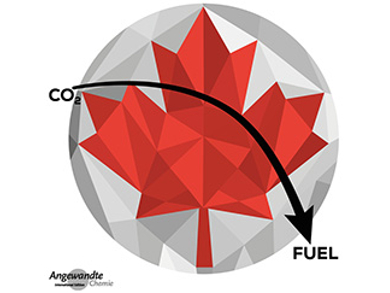In this issue on the occasion of the 100th Canadian Chemistry Conference (see the editorial by D. W. Stephan and M. Lautens), P. Strasser et al. review the stability of oxygen evolving catalysts. How can a common fundamental understanding be reached and catalyst degradation be mitigated? L. Rycek and T. Hudlicky discuss applications of the Wittig–Still rearrangement in organic synthesis in a further Review. In a Minireview, D. W. Stephan summarizes the Lewis acidity/basicity umpolung of boron and phosphorus. The Highlight deals with the chemical boosting of crop yields with plant signaling precursors (D. J. Vocadlo).
In the Communications section, C. P. Berlinguette et al. report a high-throughput synthesis of mixed-metal electrocatalysts for CO2 reduction (see picture). S. H. Withers et al. describe ultrasensitive fluorogenic reagents for neuraminidase titration, and F. M. Winnik et al. present transition-metal-doped NIR-emitting nanocrystals. A. J. Simpson et al. achieved in-phase ultra-high-resolution in vivo NMR. Y. Xu et al. found a direct link from the gas to the condensed phase through a rotational spectroscopic study of 2,2,2-trifluoroethanol trimers.
- Angewandte Chemie 22/2017: O Canada,
Angew. Chem. Int. Ed. 2017, 56 (22).




